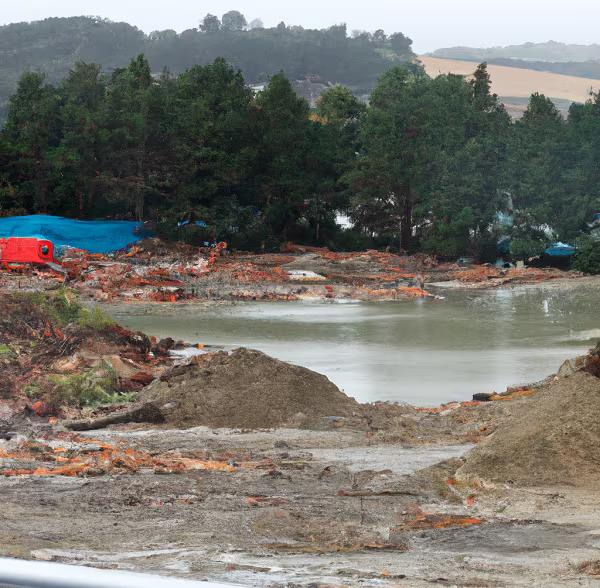
Putting Cyclone Gabrielle in perspective beside last decade’s quakes
This opinion piece was first published in Stuff on 2 April 2023.
In the early days following Cyclone Gabrielle, there were whispers that we could be facing a repair and rebuilding mission on a similar scale to the one following the 2011 Christchurch earthquake. But six weeks after the cyclone, the recovery picture is becoming clearer. By the first half of March, there were just over 100 red-stickered properties across Hawke’s Bay and Gisborne, with more than 1,000 additional yellow-stickered properties. Given the locations of the worst flooding, it seems likely that most of these properties are homes, rather than non-residential buildings. The disaster in Hawke’s Bay and Gisborne is of a very different nature to the ones in Canterbury, with a different profile of destruction.
Housing repairs are not quake-sized
Although the numbers are significant for these regions, they pale in comparison beside figures following the 2011 Christchurch earthquake, which saw 150,000 damaged homes, including an estimated 30,000 with over $100,000 worth of damage. Perhaps even more importantly, the number of stickered properties in Hawke’s Bay and Gisborne represents only about half the total in Auckland following the twin hits from the city’s late-January floods and Cyclone Gabrielle. Auckland’s just over 600 red-stickered and more than 2,000 yellow-stickered properties represent a much smaller proportion of the region’s dwelling stock, but they imply a greater amount of additional work for the residential construction industry.
We expect that the total residential repair bill for January’s North Island floods and Cyclone Gabrielle will be below $2b. This work comes at a time when the industry has been incredibly stretched, trying to keep up with consents being issued at record high levels over the last few years.
But infrastructure will easily trump Kaikōura
The biggest construction costs from Cyclone Gabrielle are around infrastructure. State Highway 2 between Napier and Wairoa is the most critically affected road, but State Highway 5 between Napier and Taupō will also need significant repair work. There is also a myriad of impassable local roads around Hawke’s Bay and Gisborne, due to slips, washouts, and many damaged or destroyed bridges. Other infrastructure costs include the restoration of rail links between Hastings, Napier, and Wairoa; work to repair electricity lines; and repair or relocation of Transpower’s Redclyffe substation. Taken together, we estimate these works could run to around $2b, easily surpassing the $1.2b repair bill for State Highway 1 and the main trunk rail line following the 2016 Kaikōura earthquake.
But work in Hawke’s Bay and Gisborne is only half the infrastructure story. Before Cyclone Gabrielle, Waka Kotahi was already facing a $1b repair cost following January’s floods, and Watercare has allowed for a $250m repair bill. Additional damage caused by the cyclone, including to State Highway 1 through the Brynderwyn Hills and State Highway 25A across the Coromandel Peninsula, means we could have a total $2b of infrastructure repairs across the rest of the upper North Island.
More demand in an inflationary environment
The aftermath of the Christchurch and Kaikōura earthquakes demonstrated the effects of a big concentration of construction activity. Residential construction costs in Canterbury rose 28% in three years after the Christchurch quake, due to worker and skills shortages, compared to an increase of just 10% around the rest of the country. Damaged homes and the need to accommodate repair workers also led to a housing shortage, resulting in double-digit rental inflation across the Greater Christchurch area in 2012 and 2013, and rental increases of up to 37%pa in Kaikōura in 2017/18.
Yet the inflationary environment when the Christchurch quake struck, 12 years ago, was very different to now. Current consumer price inflation of 7.2%pa demonstrates the greater willingness of businesses to pass on cost increases, and inflation expectations are higher across the board. For various reasons, inflation in the construction industry has been even more critical. Civil construction costs rose 15% during 2022, with residential and non-residential costs not far behind.
The additional work implied by the flood and cyclone damage will further add to the industry’s cost pressures, and there is likely to be even less hesitation passing these costs on than there was a decade ago. Government has a key role to play in trying to mitigate these pressures. Labour and skills shortages were the primary driver of cost pressures following the Christchurch quake, so even though the workforce requirements in Hawke’s Bay and Gisborne won’t match what was needed in Christchurch, it remains paramount that the government facilitates the flow of workers into these regions to meet demand. This facilitation should include funding for training, accommodative immigration policy, and assistance for workers in moving to the regions and finding housing.
Infrastructure’s outsized share of rebuilding activity also gives the government some opportunity to stage work or reprioritise other planned projects, thereby limiting demand on stretched resources at any given point in time. One of the important goals of recovery management following both Canterbury earthquakes was the attempted coordination of work across a range of different stakeholders. Recovery management following this latest disaster should be even better, with previous lessons resulting in improved processes and outcomes compared to Christchurch and Kaikōura.




















